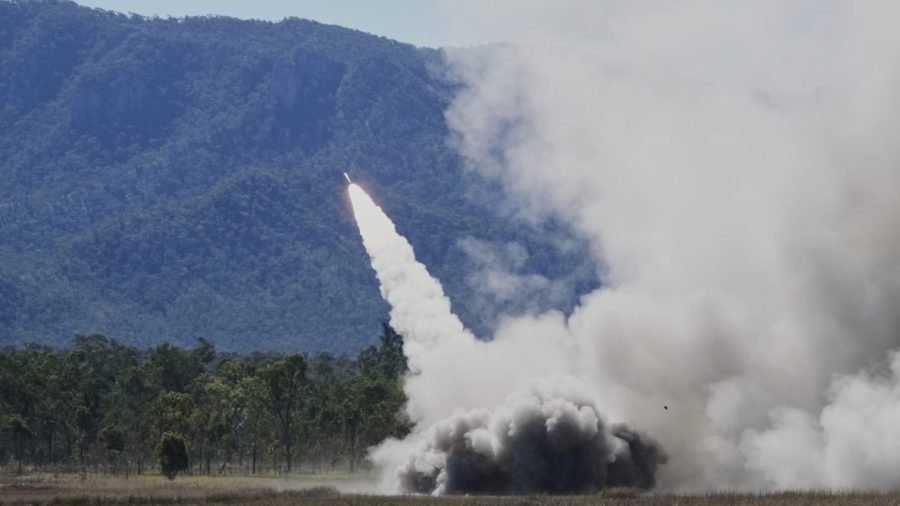
To the surprise of many, the U.S. Army, long considered to be the most bureaucratically hidebound of the military services, appears to have successfully reoriented itself toward the demands of a potential war in the western Pacific.
For example, at this month’s Talisman Sabre military exercise with Australia and Singapore, the Army employed its Typhon missile system, which entered service in 2023, to sink a maritime target at a distance of over 100 miles. And in that same exercise, it employed the HIMARS rocket artillery system in conjunction with the other two nations to demonstrate interoperability among them.
Recognizing the growing threat from China, the Army began to reorient itself during the Biden administration and has therefore easily and quickly adapted itself to the Trump administration’s priorities.
But notwithstanding its strategic reorientation, the Army’s acquisition processes continue to suffer from a long-standing inability to consistently field major new weapons systems. The Army continues to operate Abrams tanks, Bradley infantry fighting vehicles and Apache helicopters that, although upgraded over the years, are fundamentally products of the mid-1970s.
The list of failed Army programs is both long and troubling. In 1982, the Department of Defense canceled the Roland short-range air defense missile system, originally a Franco-German product that the Army unsuccessfully sought to modify and integrate. Three years later, Secretary of Defense Caspar Weinberger canceled the Sergeant York Division Air Defense gun which, like Roland, had been in development since the mid-1970s. The Sergeant York not only had spiraling costs but was also unable to track low-flying targets and suffered from a range too short to attack missiles fired from Soviet helicopters.
In 1987, the Army had to cancel its Aquila remotely piloted vehicle program — the forerunner to today’s drones. The Aquila suffered from cost overruns and development delays, as well as an inability to carry the payloads and data links for which it had been designed.
In 2002, Secretary of Defense Donald Rumsfeld terminated the Crusader self-propelled howitzer, which also suffered from cost overruns and was too heavy for the expeditionary operations that became the military’s priority after 9/11. Two years later, Rumsfeld canceled the Comanche reconnaissance helicopter. The cancellation represented the latest in the Army’s decades-long failure to replace the late 1960s vintage OH-58 Kiowa Warrior. The Army tried again with its Armed Reconnaissance Helicopter program, and in 2008 this too was terminated.
The Army’s armor programs at best have had mixed results. The service successfully fielded the lightweight Stryker vehicle, which has seen a number of upgrades and variations since it was first entered full-scale production in 2005. But that was not the fate of the Manned Ground Vehicle, a key element of the Future Combat System, which was meant to be a lightweight companion to the Abrams tank. The Pentagon terminated the Future Combat System program in 2009 due to cost overruns and technological challenges, and the Manned Ground Vehicle, which suffered from the same shortcomings, collapsed with it.
In June, the Army terminated its M-10 Booker combat vehicle program, previously known as Mobile Protective Firepower. The Booker was meant to be a lightweight air-droppable vehicle that could be carried on a C-130 aircraft. After having taken delivery of 80 of them, the Army determined that the M-10 was too heavy for the aircraft and a poor fit for the service’s operational requirements.
The common thread in all these failures is the Army’s manifest inability to anticipate evolving requirements, to control costs and to avoid program delays. As the war in Ukraine has demonstrated, cutting-edge technologies will be critical to success on future battlefields.
To be effective in any future contingency, the Army will have to overhaul its entire acquisition system. It simply cannot tolerate the program delays and cost growth that have stymied so many previous development programs.
Moreover, the Army must carefully assess its requirements for new systems, focusing on a range of future contingencies and not limiting itself to any one of them. It is therefore critical that as the Army contemplates acquiring a follow-on to the M-10, and for that matter replaces key weapons systems like the Abrams tank, it should not restrict its requirements and programs to contingencies in the western Pacific, where it is likely to do no more than to supplement Navy, Marine and Air Force operations.
Instead, the Army should look beyond both its current Pacific orientation and expected forthcoming reductions in its European presence. Its future program development and acquisition should also account for its ongoing and critical role in support of NATO’s ability to deter an aggressive and predatory Russia that seems likely to continue menacing Europe for many years to come.
Dov S. Zakheim is a senior adviser at the Center for Strategic and International Studies and vice chairman of the board for the Foreign Policy Research Institute. He was undersecretary of Defense (comptroller) and chief financial officer for the Department of Defense from 2001 to 2004 and a deputy undersecretary of Defense from 1985 to 1987.


